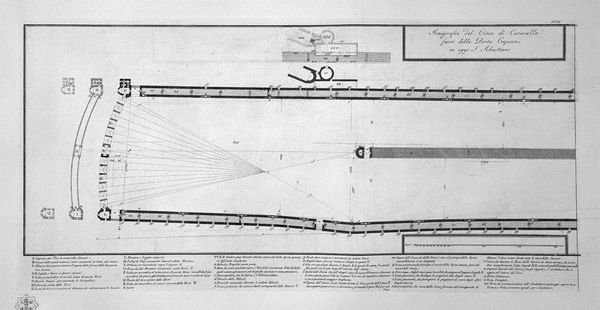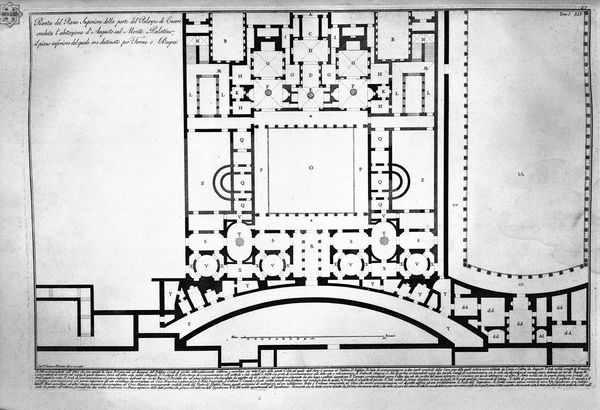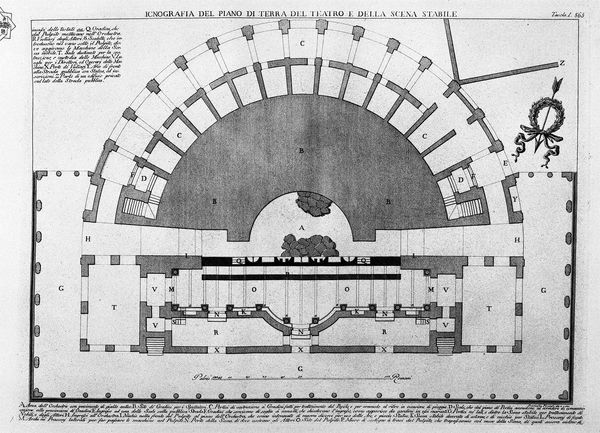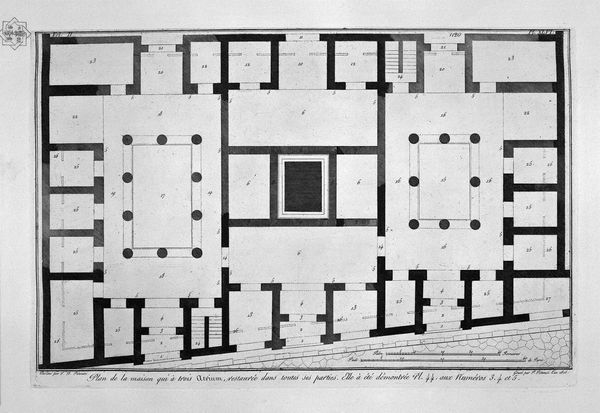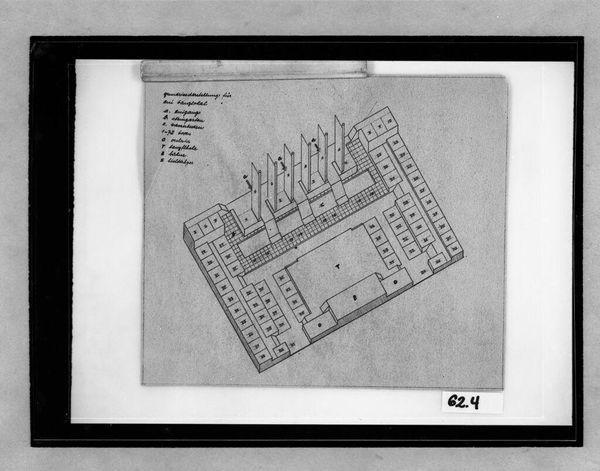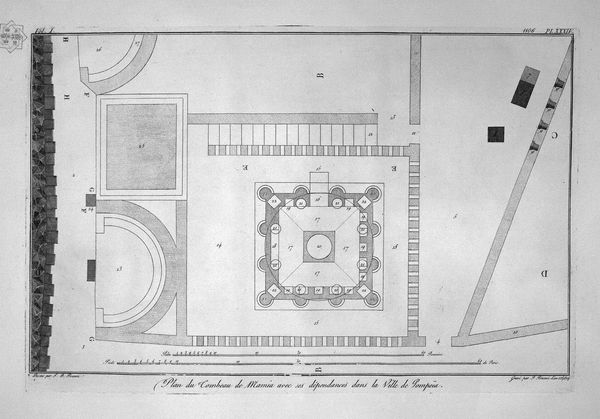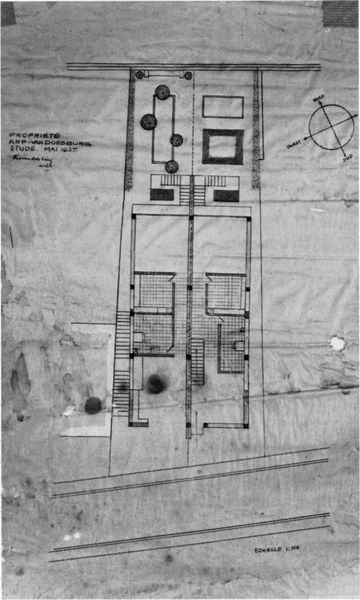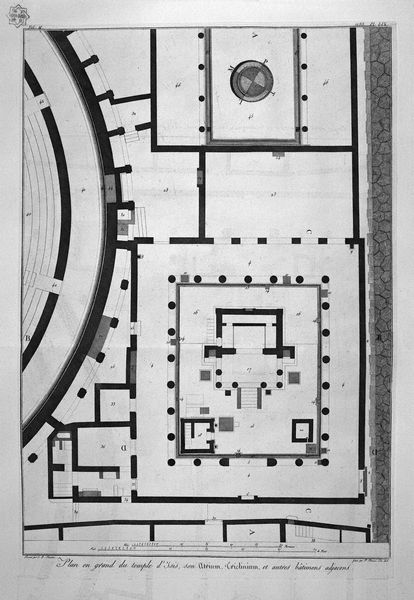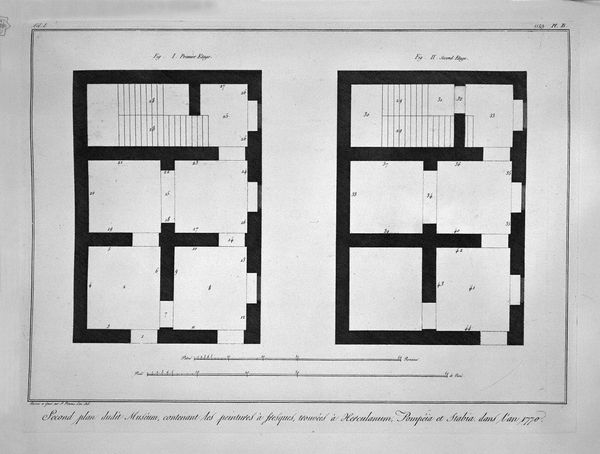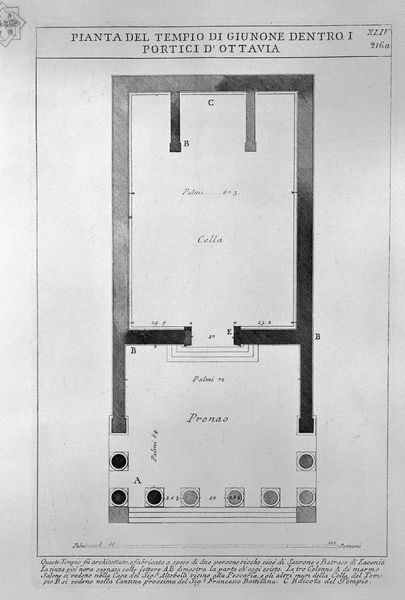
Ground plan of the Circus of Caracalla in today Capena outside the Porta S. Sebastian, in the two boards meet together
0:00
0:00
drawing, print, etching, engraving, architecture
#
drawing
# print
#
etching
#
perspective
#
geometric
#
ancient-mediterranean
#
cityscape
#
engraving
#
architecture
Copyright: Public domain
Curator: Today, we're looking at Giovanni Battista Piranesi's "Ground plan of the Circus of Caracalla in today Capena outside the Porta S. Sebastian, in the two boards meet together," an etching and engraving depicting, well, exactly what the title says. Editor: Immediately, I'm struck by the sense of measured calm, the feeling of order that emerges from this precise linear network. It’s austere, almost clinical in its representation, which I find very appealing. Curator: Piranesi’s rendering provides an ordered perspective; we can use the lines, shading, and intricate details of his technique to almost decode the Circus’ dimensions and internal logic. The etching transforms historical ruins into an intricate, almost architectural statement in itself. Editor: Thinking of that space – that oblong form – it suggests the great cycle of games and the life that flowed through the arena. The form is almost womb-like. Could it be seen as an allegory of rebirth or perhaps an architectural rendering of the circle of life itself? Curator: Fascinating interpretation. It could also refer to ideas of centrality, hierarchy, and perhaps the rigid structure of Roman society. Look at the use of geometry – how circles, lines, and angles define and articulate distinct areas. This emphasizes a controlled visual, rather than raw chaotic ancient experience. Editor: But is that chaos fully suppressed? The very subject - ruins - suggest temporal passage, things broken down by age. They act as an inevitable symbol of decay; a meditation on the contrast of the strength of the Empire against nature's relentless force, as much as order itself. Curator: Good point. The work uses clarity and logic, yet reveals those inherent tensions too. Editor: A really beautiful, if somewhat stark representation of something now long gone that still triggers strong reflections and resonates to this day. Curator: Precisely, the rendering is an exploration of Roman society, of perspective, time, and more, contained within tight lines, forms and visual organisation. It opens our minds.
Comments
No comments
Be the first to comment and join the conversation on the ultimate creative platform.
